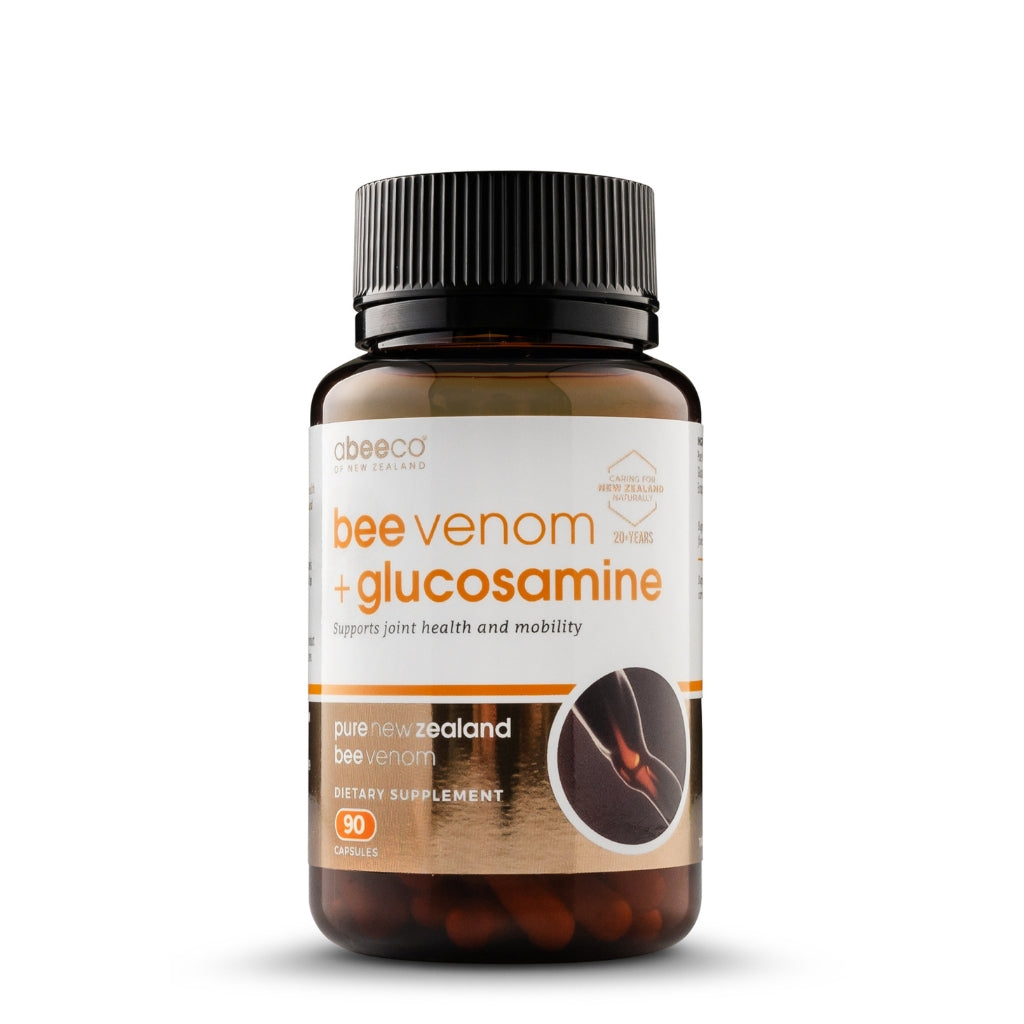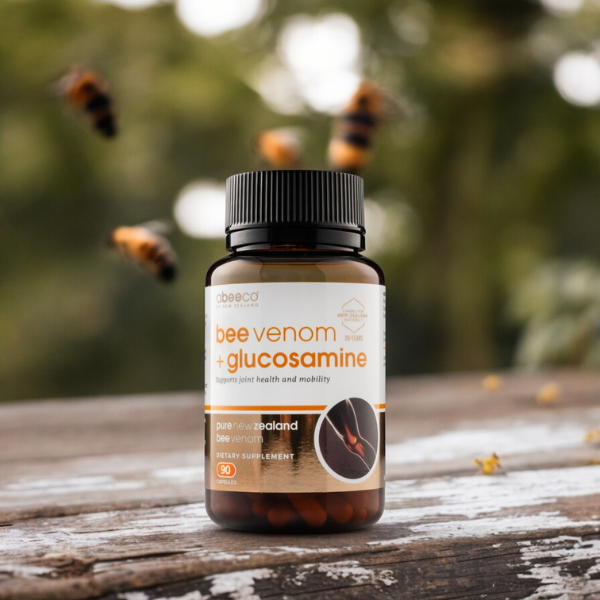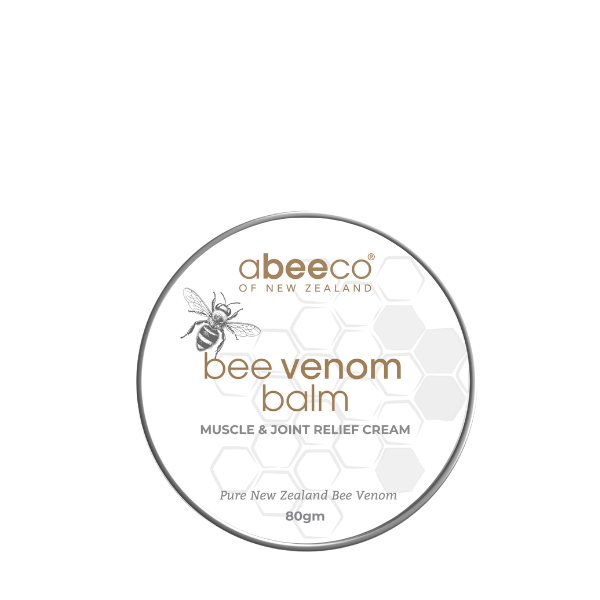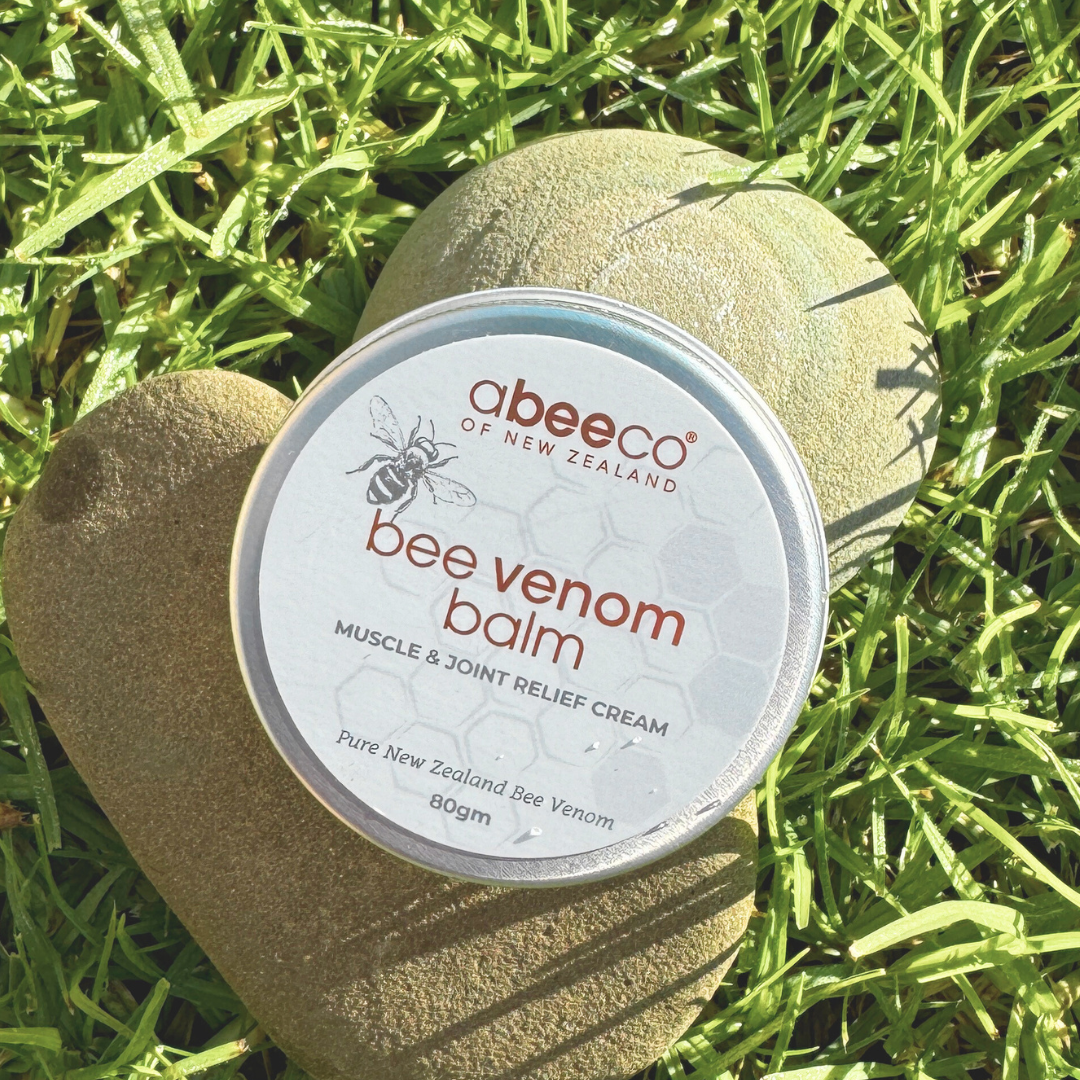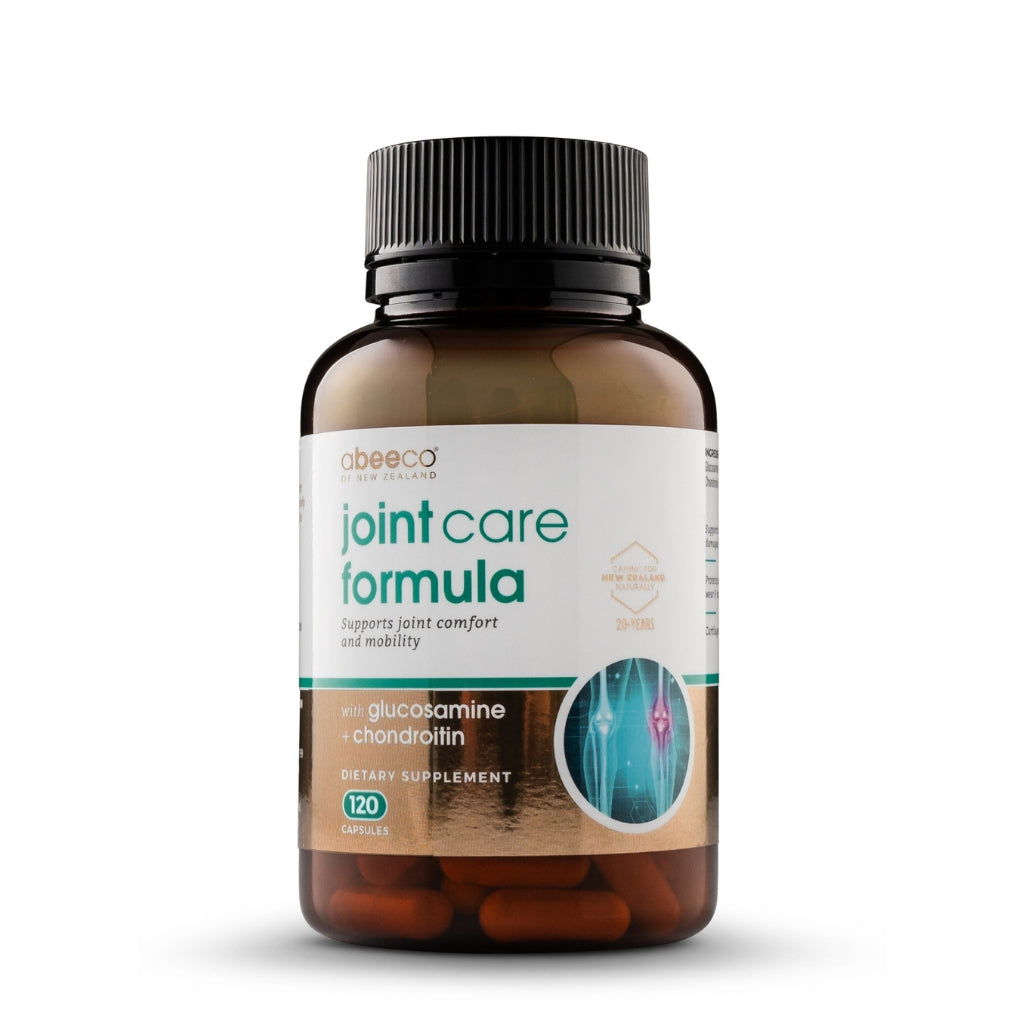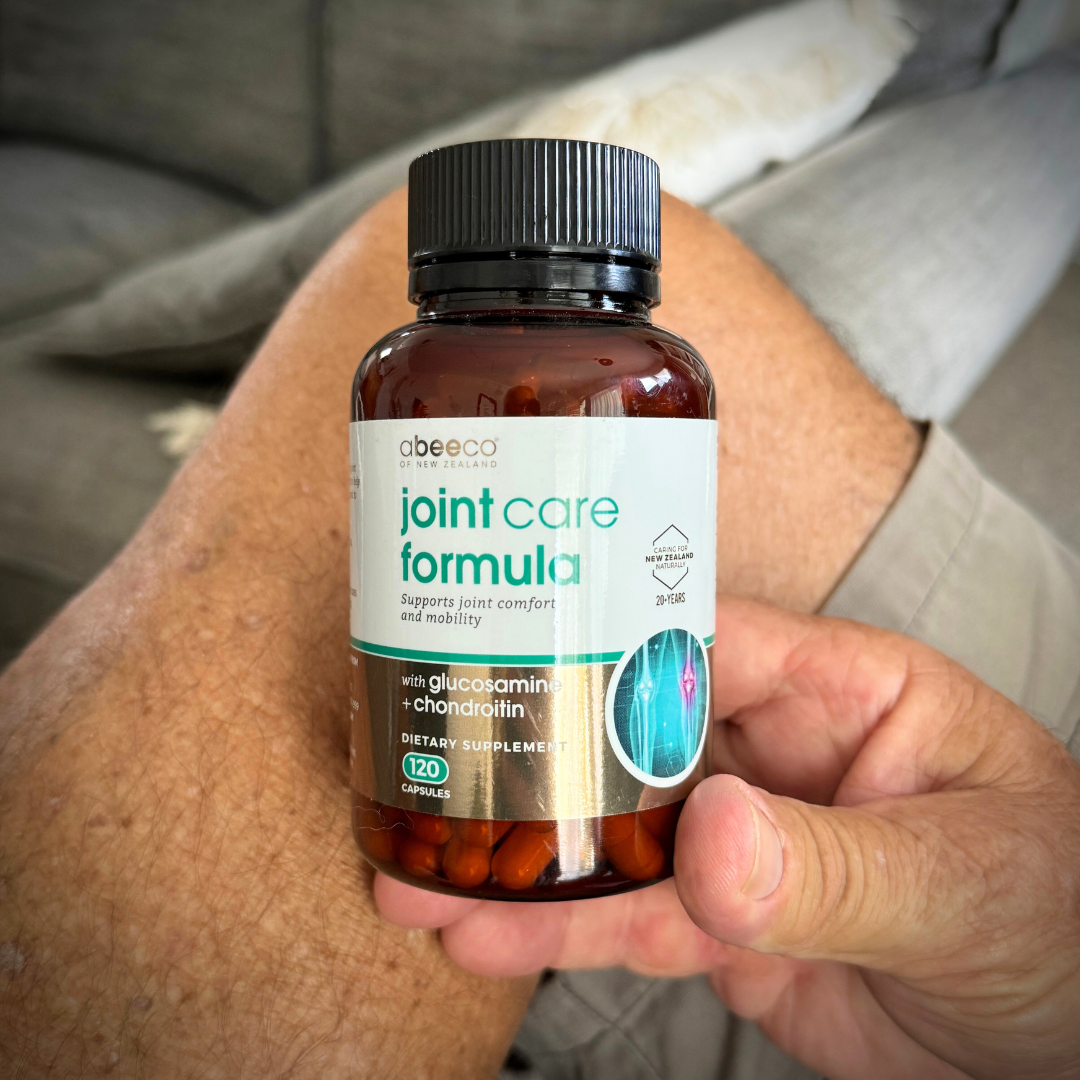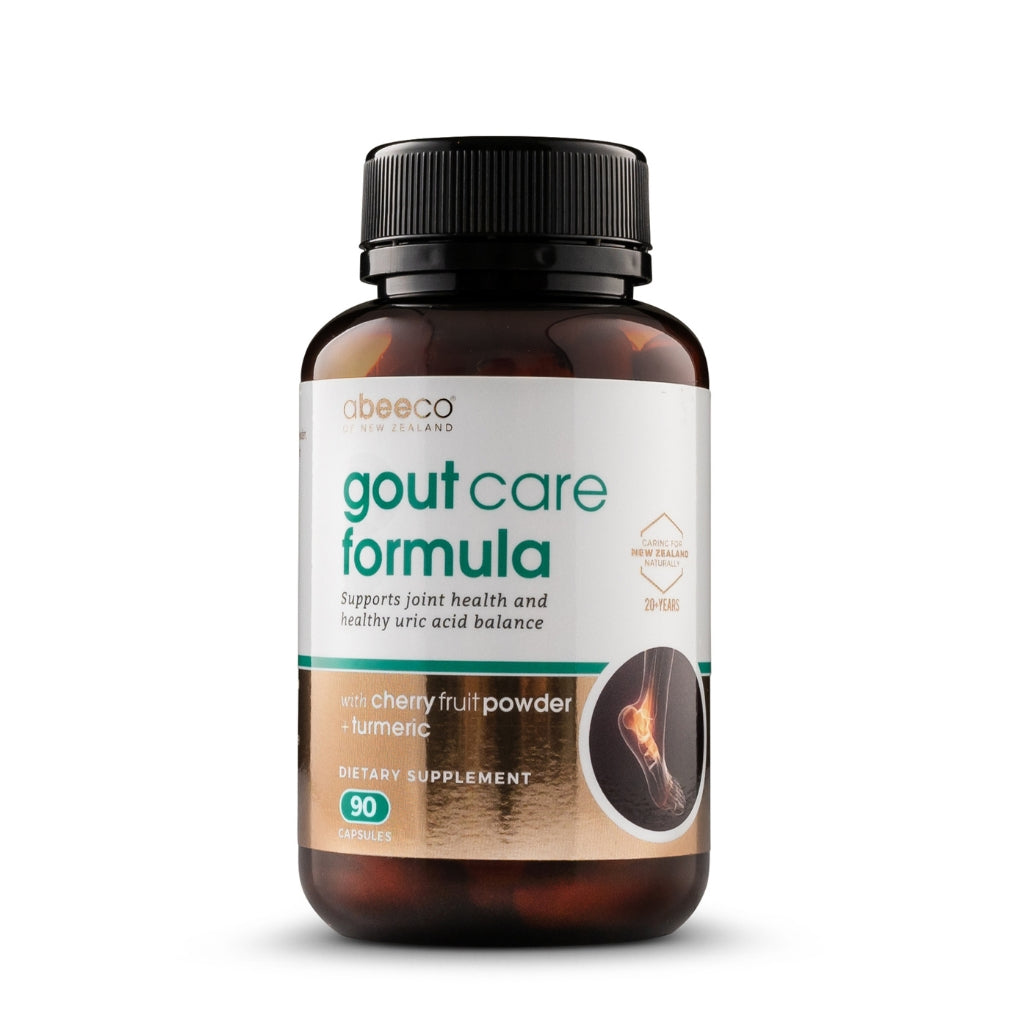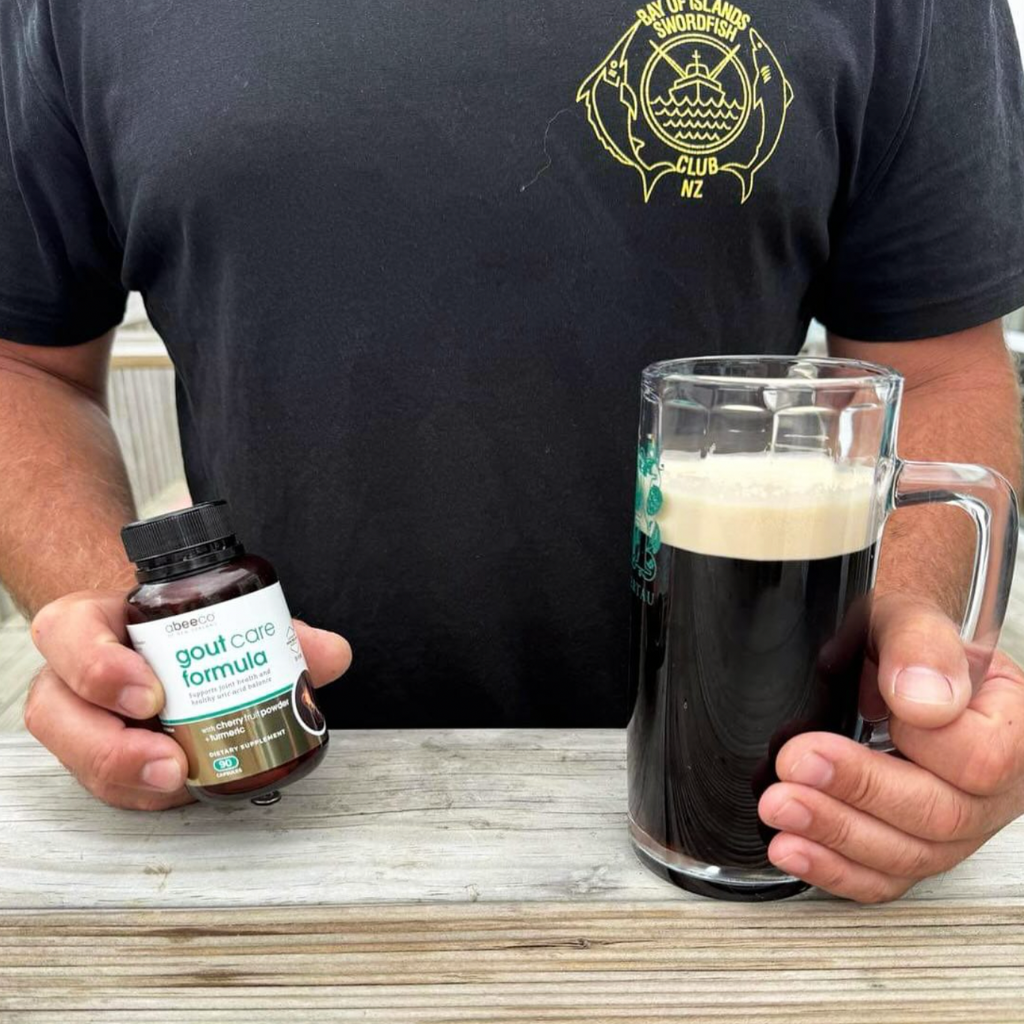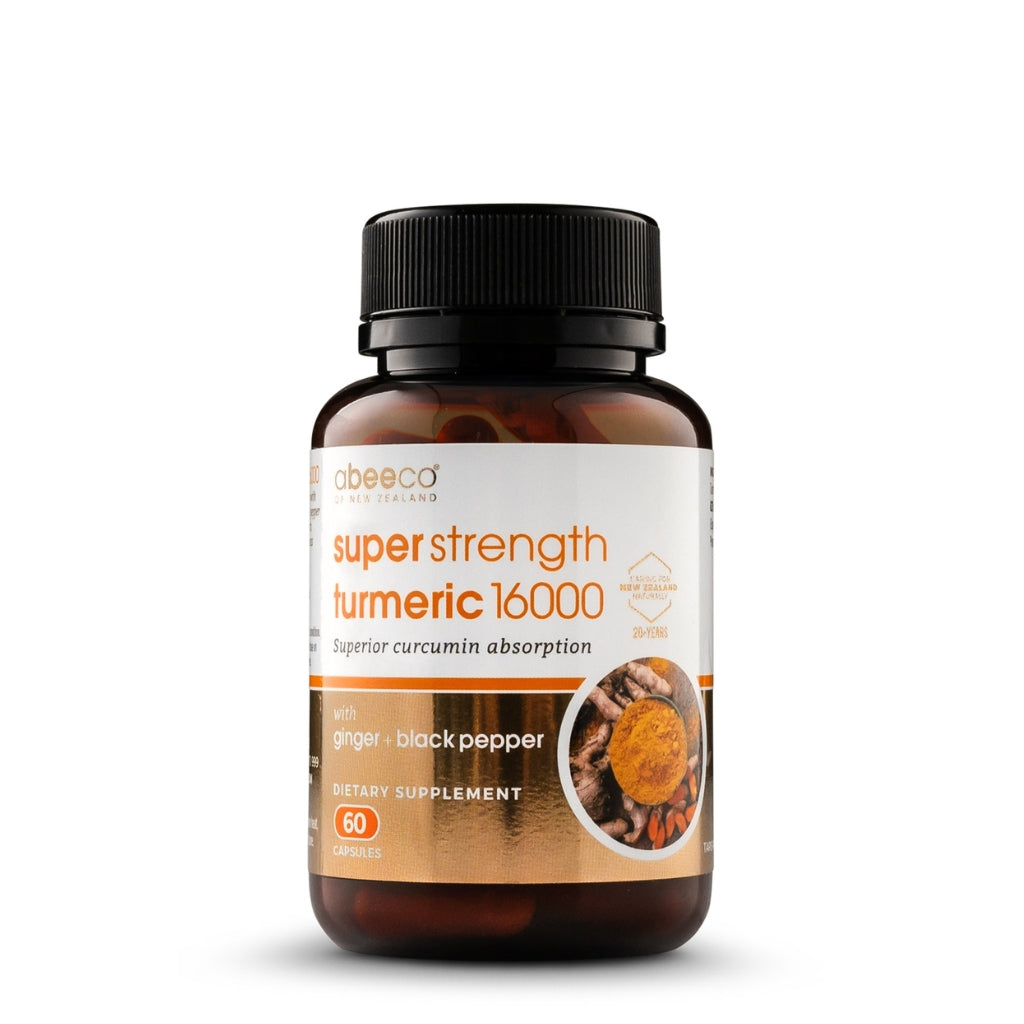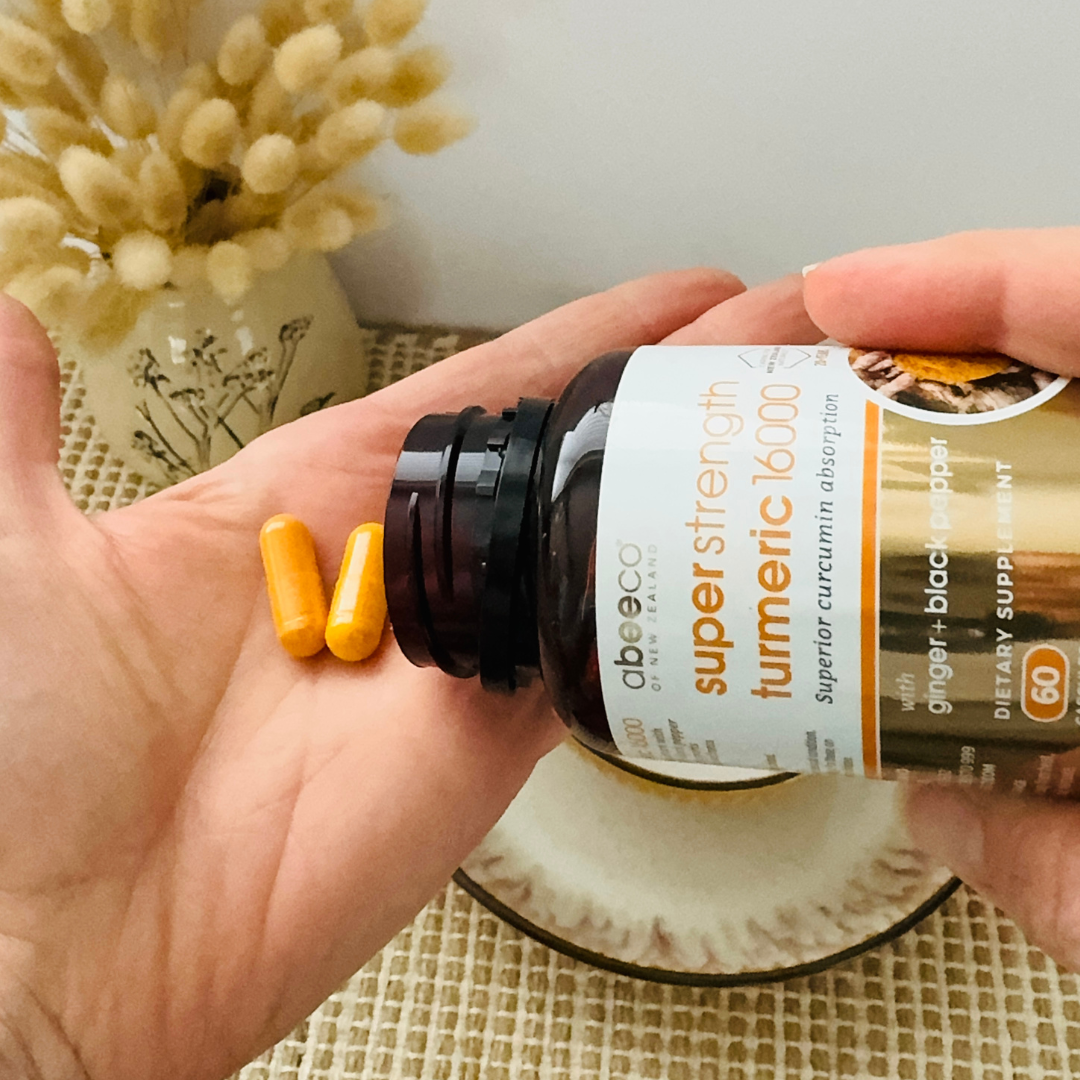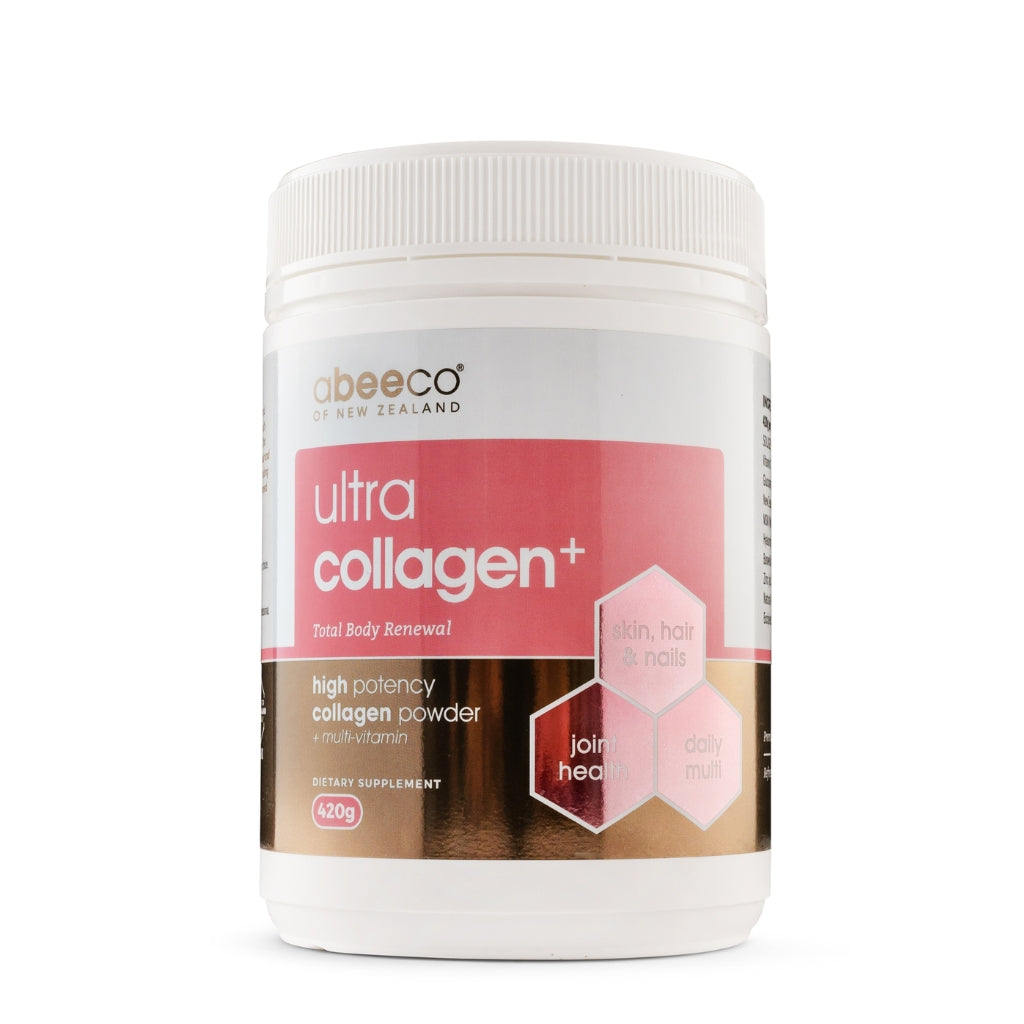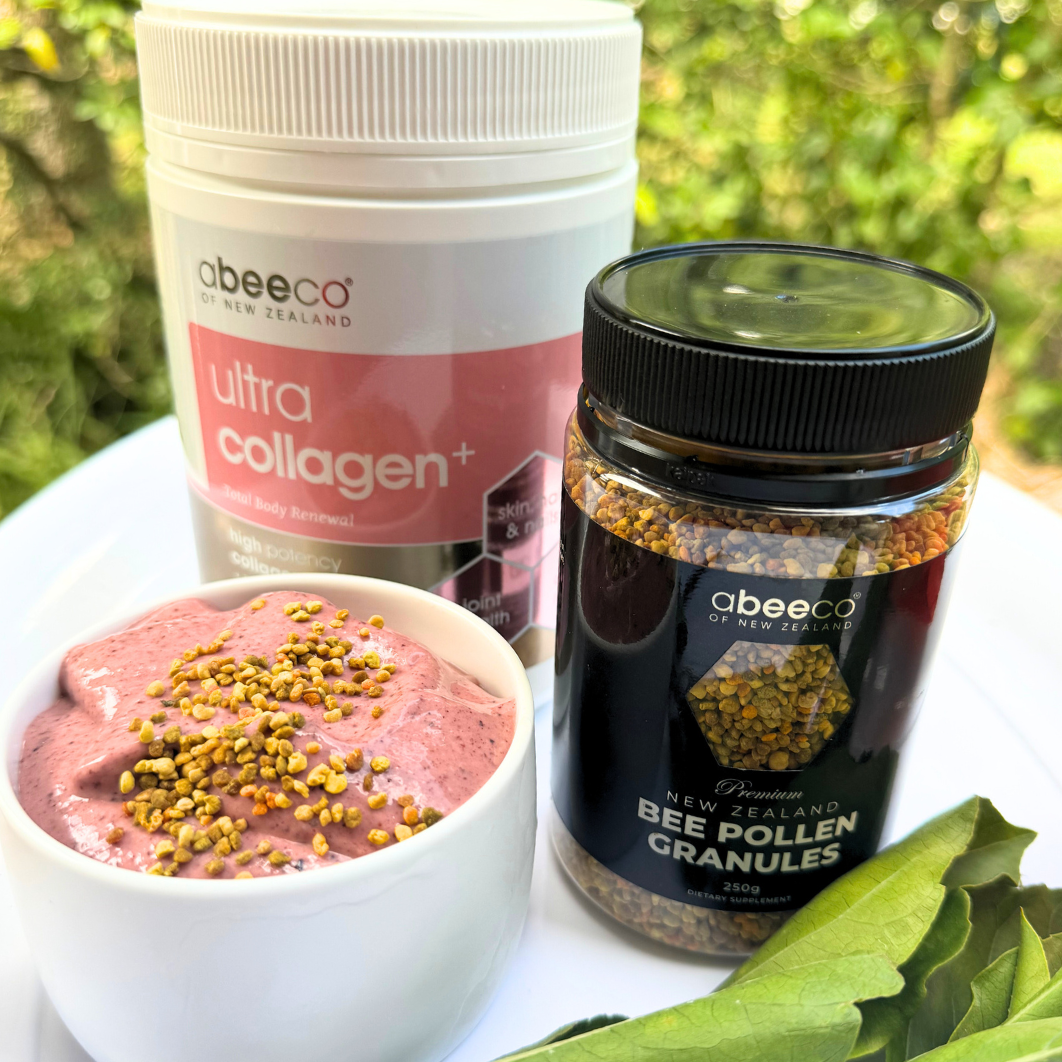Holiday closure: Dec 24th to the Jan 4th. Orders made during this time will be dispatched once we return.
Holiday closure: Dec 24th to the Jan 4th. Orders made during this time will be dispatched once we return.
Supplements
Shop by Health Concern
Shop by Category
Shop by Health Concern
Shop by Category
Skincare
Shop by Skin Type / Concern
Shop by Category
Shop by Skin Type / Concern
Shop by Category
Managing Joint Pain, Naturally!
April 29, 2024 8 min read
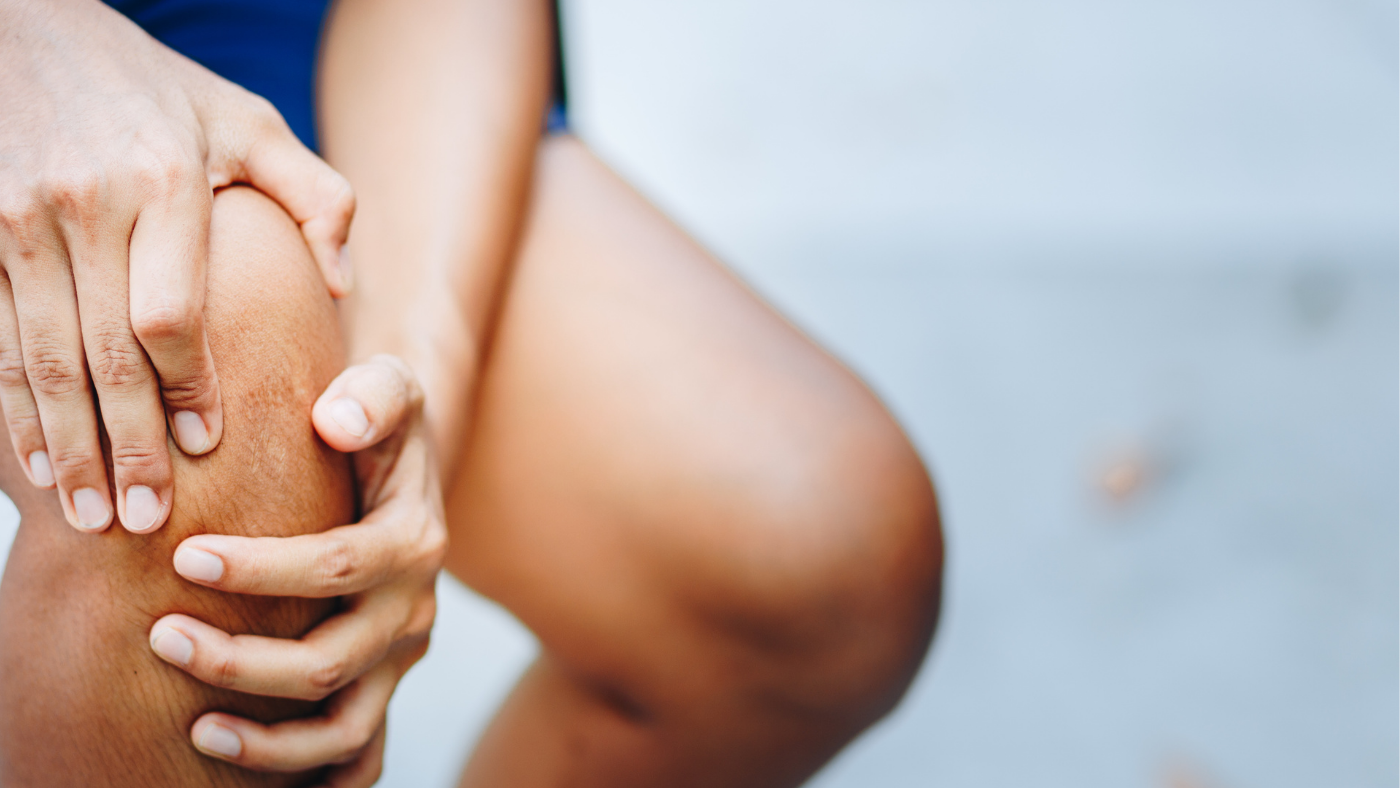
Joint pain – what’s it good for? Absolutely nothing, except serving as a reminder that changes are happening in your body. It’s time to pay attention.
Starting to feel like you’ve got creaking bones? Then you are not alone!
Often, as we age, our joints begin to feel stiff and give us on-going pain. This can be especially true when we wake up in the morning and in the cooler months of the year when temperatures are lower. Lying down at night to sleep can reduce circulation of fluid. This can make moving joints more difficult first thing in the morning. Years of constant use can take their toll on joints, muscles, and bones, the phrase “don’t use your back like a crane” is often repeated for good reason! Physical jobs, diets lacking in nutrients, lack of regular exercise, hormonal changes and dehydration can all factor in to your ongoing joint health.
Joint stiffness may only be mild and just impact your mobility for a brief period of time, such as each morning or after sitting for extended periods of time. Over time the stiffness may become more severe and impact your mobility.
In most cases, pain and inflammation accompany joint stiffness. This may make walking, standing, or putting weight on your joints painful. This is when anti-inflammatory medicines such as Ibuprofen can really help, but these types of drugs are not an ideal long term solution as it can have unhelpful knock on effects for the digestive system.
Not all stiff joints are the result of the ageing process. Many common conditions, along with injuries, can cause stiff joints. These include arthritis, lupus, sprains and bursitis. Lifestyle factors, including diet and weight, can also impact joint mobility.
In trying to overcome joint pain, and to apply the philosophy of prevention is better than cure, many people are looking to a broader range of options rather than just those from the pharmacy or doctor. Here we take a look at 3 types of treatment:
- Natural Remedies
- Herbal Remedies
- Lifestyle Remedies
Having information and knowledge is the first step to forming your total holistic approach to joint pain relief and care.
Natural Remedies
-
Glucosamine
Glucosamine plays a vital role in building cartilage, and many people take it as a supplement to treat arthritis and osteoarthritis. It occurs naturally in the fluid around the joints, in animal bones, bone marrow, and shellfish.
Glucosamine, especially glucosamine sulfate, is commonly extracted from the shells of shellfish to make easily absorbable dietary supplements.
Glucosamine is vital for building cartilage. Cartilage is a flexible, tough connective tissue found in many parts of the body. This firm, rubbery tissue functions as padding at the ends of long bones, where joints meet.
As we age, cartilage can become less flexible and can steadily break down. There are many bodies of evidence that glucosamine may slow this process.
This is why we have included it in our abeeco Bee Venom and Glucosamine supplement , and our Ultra Collagen+ powder.
-
Collagen
Collagen helps maintain the integrity of your cartilage, which is the rubber-like tissue that protects your joints. Collagen is the most abundant protein in the extracellular matrix of connective tissues (Martinez-Puig et al, 2023), such as cartilage. As the amount of collagen in your body decreases with wear and tear, hormonal changes and age, your risk of developing degenerative joint disorders such as osteoarthritis can increase. Studies have shown that taking Collagen may help to repair cartilage.
Check out our our abeeco Collagen supplements here.
-
Chondroitin
Chondroitin is also a natural substance found in the body. It is believed to help draw water and nutrients into the cartilage, keeping it healthy and sponge-like. Many studies support the use of both glucosamine and chondroitin as use in the treatment and management of joint conditions, such as osteoarthritis.
-
Hyaluronic acid
Hyaluronic acid is well known for its skin benefits, especially alleviating dry skin, reducing the appearance of fine lines and wrinkles and speeding up wound healing. As it is abundant in the synovial fluid of joints it may also help relieve joint pain in people with osteoarthritis and other joint conditions.
Check out our abeeco Ultra Collagen Powder here which includes Hyaluronic acid.
-
Bee Venom
Studies have found that bee venom blocks the production of pro-inflammatory substances, such as cytokines, tumour necrosis factor-2, and cyclooxygenase-2. Bee venom also acts to inhibit the formation of rheumatoid synovial cells, thereby reducing swelling, pain, and joint deformity.
Check out our abeeco Bee Venom and Glucosamine supplement here.
-
MSM
Methylsulfonylmethane, more commonly known as MSM, is a popular supplement used in the treatment of joint pain. Studies have shown that MSM significantly reduces inflammation in your body. It also inhibits the breakdown of cartilage, that marvellous flexible tissue that protects the ends of your bones in joints
Check out our abeeco Ultra Collagen Powder and our Gout Care Formula here which both include MSM.
Herbal Remedies
Certain herbs have anti-inflammatory and other healing properties that may help with various forms of joint dysfunction. Please always talk to your doctor first if you are concerned about possible interactions with medications.
-
Boswellia
Boswellia, also called frankincense, is praised for its anti-inflammatory capabilities. It’s derived from the gum of the Boswellia tree, that is indigenous to India.
This herb is understood to work by blocking substances (leukotrienes) that attack healthy joints in autoimmune diseases such as RA. The NCCIH Trusted Source acknowledges promising evidence of Boswellia from in-vivo studies. Boswellia is available in tablet form, topical creams and is included in our Ultra Collagen+.
-
Cat’s Claw
Cat’s claw is another anti-inflammatory herb that may reduce pain in arthritis. This herb is from an Amazonian vine, and its usage dates back to Incan civilisations.
Studies have shown that compared to placebo this incredible herb reduced the pathways that contribute to pain in osteoarthritis (Piscoya et al, 2001).
-
Eucalyptus
Topical forms of eucalyptus leaves are often in preparations that are used to treat arthritis pain.
The plant leaves contain tannins, which may be helpful in reducing swelling and the pain arthritis causes. Some users follow up with heat pads to maximise the effects of eucalyptus on swollen joints.
-
Ginger
You may have ginger in your spice cabinet for cooking, but this herb is also a staple in many medicine cabinets. The same compounds that give ginger its strong flavour also have anti-inflammatory properties.
In traditional medicine, such as Chinese medicine, ginger is used to increase blood circulation, which brings heat and improves healing mechanisms for the affected area. Research shows promise for the use of ginger in osteoarthritis (Altmen & Marcussen, 2001).
Both our abeeco Gout Care Formula and our Super Strength Turmeric include ginger root.
-
Turmeric
Turmeric is a yellow powder made from the related flowering plant. It’s used in cooking to make curry. It also has potent anti-inflammatory properties.
Curcumin, the active ingredient in turmeric, has been used in folk medicine for thousands of years, an analysis of a group of studies shows that Curcumin has properties and effects that are comparable to popular anti-inflammatory medications, in some cases (Paultre et al, 2021). Unlike other types of herbs, it has been found that turmeric may work best in fighting joint pain when taken orally and when blended with black pepper and ginger.
Check out the abeeco Super Strength Turmeric supplement which includes high strength turmeric.
Lifestyle Remedies
-
Lose weight
Your weight can make a big impact on the amount of pain you experience from arthritis. Extra weight puts more pressure on your joints, especially your knees, hips, and feet.
Reducing the stress on your joints by losing weight will improve your mobility, decrease pain, and prevent future damage to your joints.
-
Get more Exercise
There are more benefits to exercise than just weight loss. Regular movement helps to maintain flexibility in your joints. Weight-bearing exercises such as running and walking can be damaging. Instead, try low-impact exercises such as water aerobics or swimming to flex your joints without adding further stress.
-
Use hot and cold therapy
Simple hot and cold treatments can make a world of difference when it comes to arthritis pain. Long, warm showers or baths — especially in the morning — help ease stiffness in your joints. Use an electric blanket or moist heating pad at night to keep your joints loose.
Cold treatments are best for relieving joint pain, swelling, and inflammation. Wrap a gel ice pack or a bag of frozen vegetables in a towel and apply it to painful joints for quick relief.
-
Try acupuncture
Acupuncture is an ancient Chinese medical treatment that involves inserting thin needles into specific points on your body. This has been shown to connect with the nervous system to activate pathways to down regulate inflammatory reactions in many areas of the body. Acupuncture is the most researched complementary therapy and is recommended by the World Health Organization for treatment of over 100 different conditions.
-
Use meditation to cope with pain
Meditation and relaxation techniques may be able to help you reduce pain from arthritis by reducing stress and enabling you to cope with it better. According to the National Institutes of Health (NIH), studies have found that the practice of mindfulness meditation is helpful for some people with painful joints. Researchers also found that those with depression and arthritis benefited the most from meditation. When stress is reduced, inflammation and thus swelling and pain drop.
-
Include the right fatty acids in your diet
Everyone needs omega-3 fatty acids in their diet for optimum health. These fats also help your arthritis. Fish oil supplements, which are high in omega-3s, have been shown to reduce joint stiffness and pain.
Another fatty acid that can help is gamma-linolenic acid, or GLA. It’s found in the seeds of certain plants such as evening primrose, borage, hemp, and black currants. You can also buy the oils of the seeds as a supplement. However, be sure to check with your doctor before taking them as fish oil also thins the blood and may interact with some medication.
-
Get a massage
According to the Arthritis Foundation, regular massaging of arthritic joints can help reduce pain and stiffness and improve your range of motion. Work with a physical therapist to learn self-massage, or schedule appointments with a massage therapist regularly.
As you can see, there are many different ways to treat joint pain and get some kind of respite. We recommend finding what works best for you and keeping this up as a regular care routine. Joint pain doesn’t need to rule your life, and with some care and attention it can be managed and in some cases eliminated. Your health is your wealth!
References
Paultre K., Cade W., Hernandez D., Reynolds J., Greif D., Best T. (2021) Therapeutic effects of turmeric or curcumin extract on pain and function for individuals with knee osteoarthritis: a systematic review. Retrieved from: https://www.ncbi.nlm.nih.gov/pmc/articles/PMC7812094/
Oe M., Tashiro T., Yoshida H., Nishiyama H., Masuda Y., Maruyama K., Koikeda T., Maruya R., Fukui N. (2016) Oral hyaluronan relieves knee pain: a review. Retrieved from: https://pubmed.ncbi.nlm.nih.gov/11603848/
Martinez-Puig D., Costa-Larrion E., Rubio-Rodriguez N., Galvez-Martin P. (2023) Collagen Supplementation for Joint Health: The link between composition and scientific knowledge. Retrieved from: https://www.ncbi.nlm.nih.gov/pmc/articles/PMC10058045/
Altman R D & Marcussen K C. (2001) Effects of a ginger extract on knee pain in patients with osteoarthritis. Retrieved from: https://pubmed.ncbi.nlm.nih.gov/11710709/
Additional Reading
Bee Venom:
https://www.sciencedaily.com/releases/2004/11/041108030833.htm

Rebecca Wood
MEET THE AUTHOR
With over 20 years of experience in clinical practice, Rebecca brings a wealth of knowledge and genuine passion to the world of natural health. She loves exploring the science behind nature's remedies and sharing practical insights to help others on their wellness journey. Dedicated to empowering people to take charge of their health, Rebecca combines research, expertise, and care in everything she does.
Disclaimer: This article provides general information only and is not a substitute for medical advice. Abeeco products are for cosmetic and dietary purposes. Our supplements & tonics aren't intended to diagnose, treat, cure, or prevent any disease. Consult a healthcare professional for medical advice or before starting new supplements. Individual results may vary. Always follow product directions. Our products are not intended to treat or cure any medical condition.

